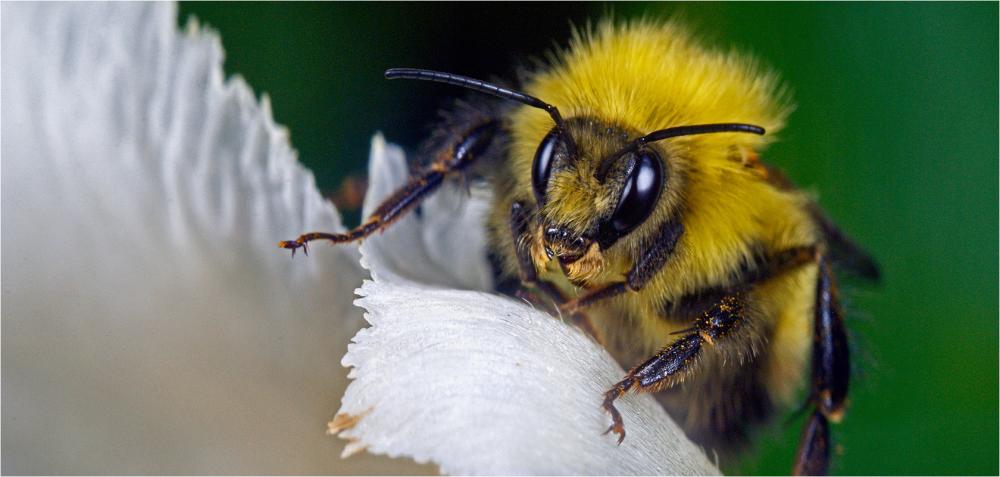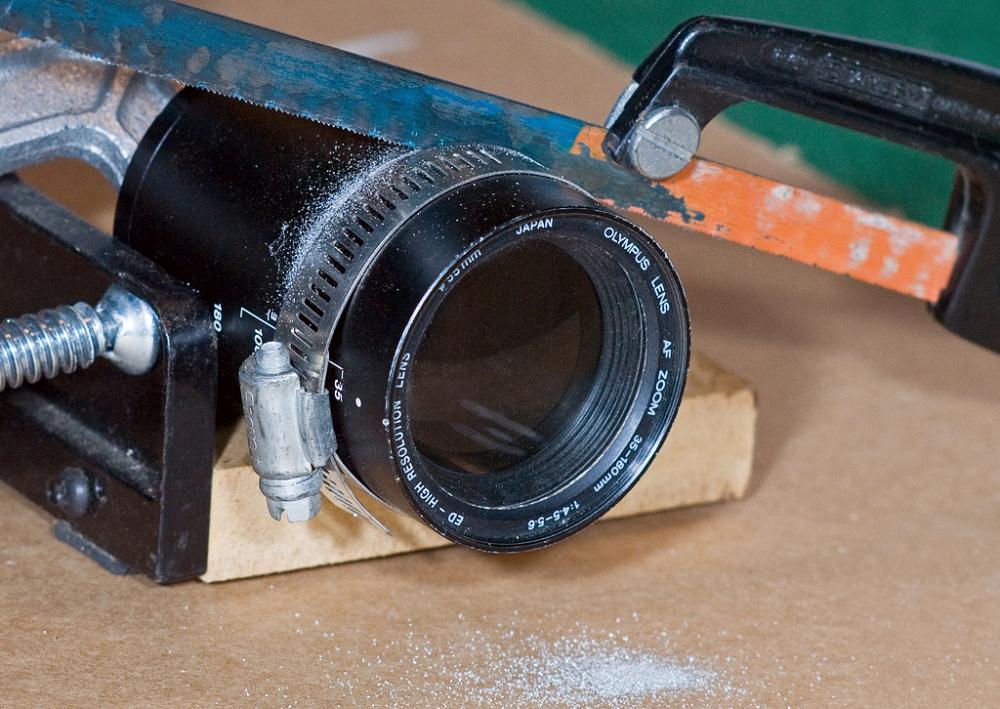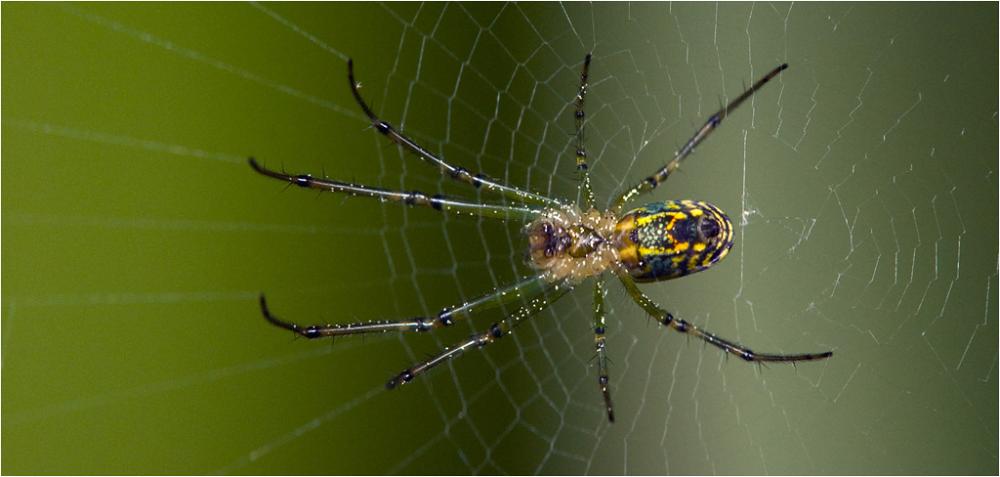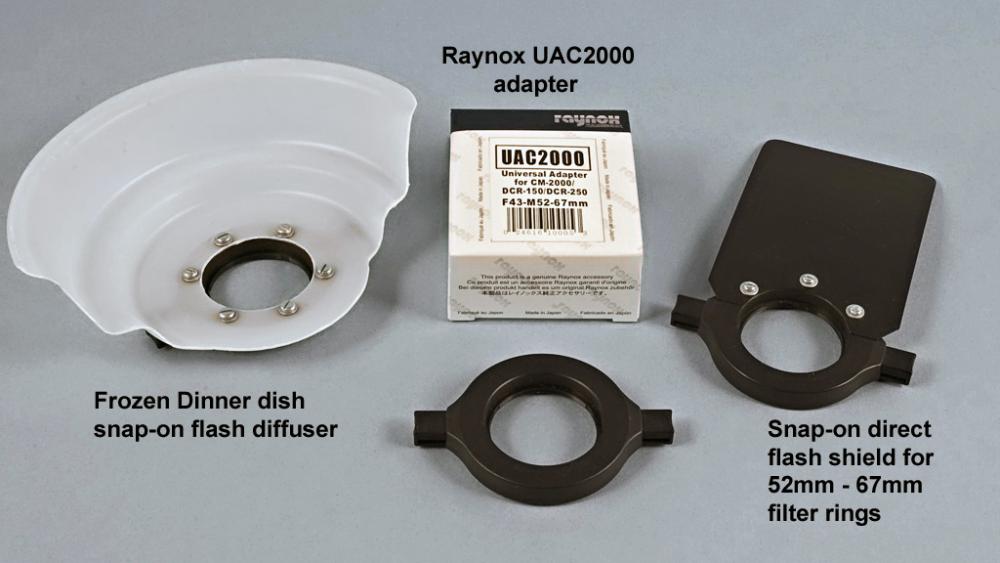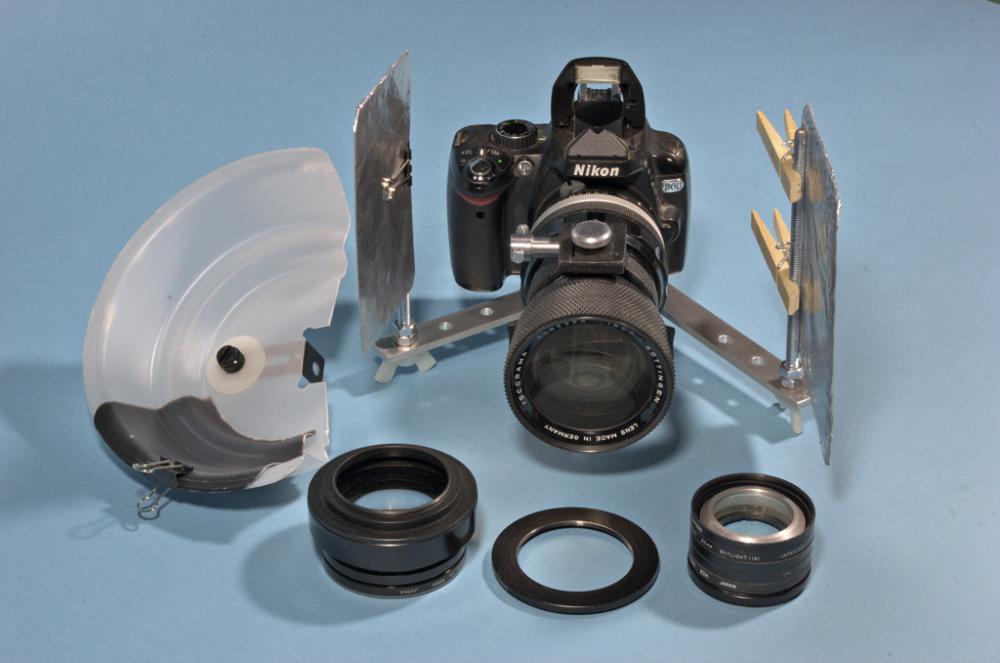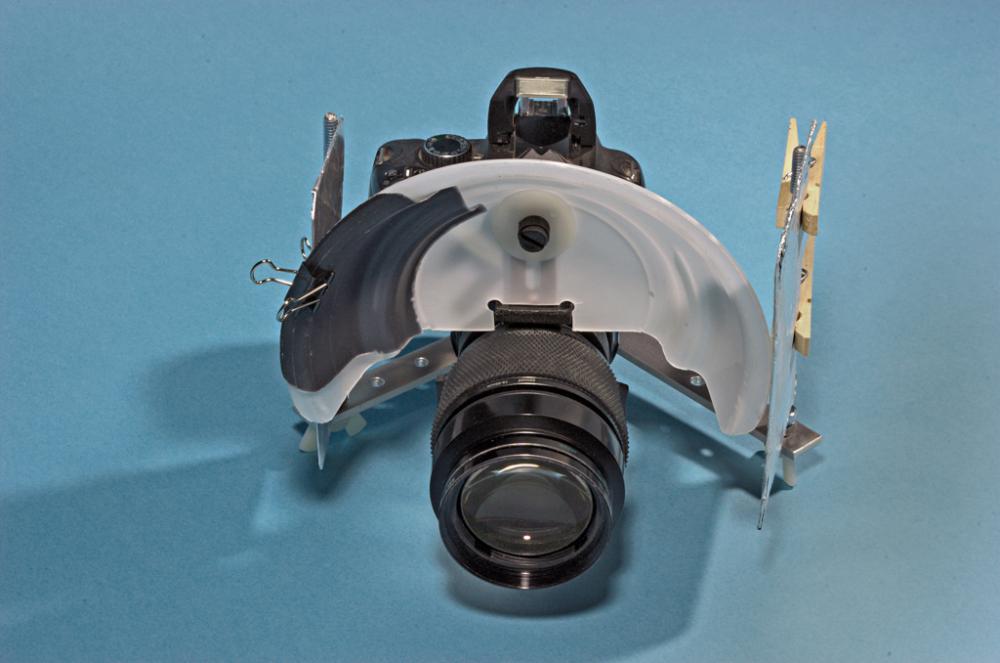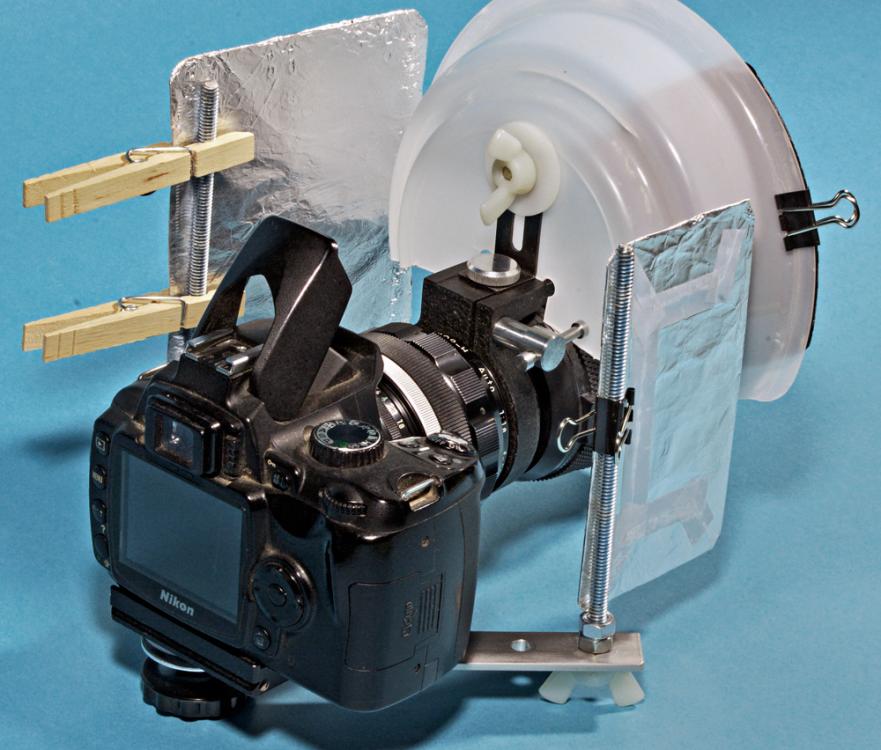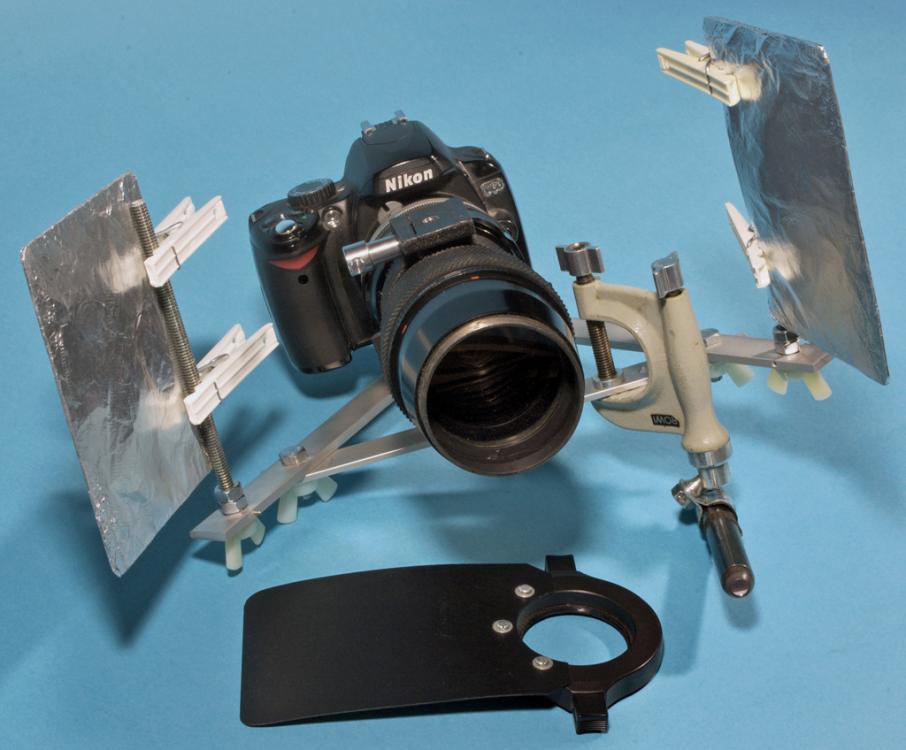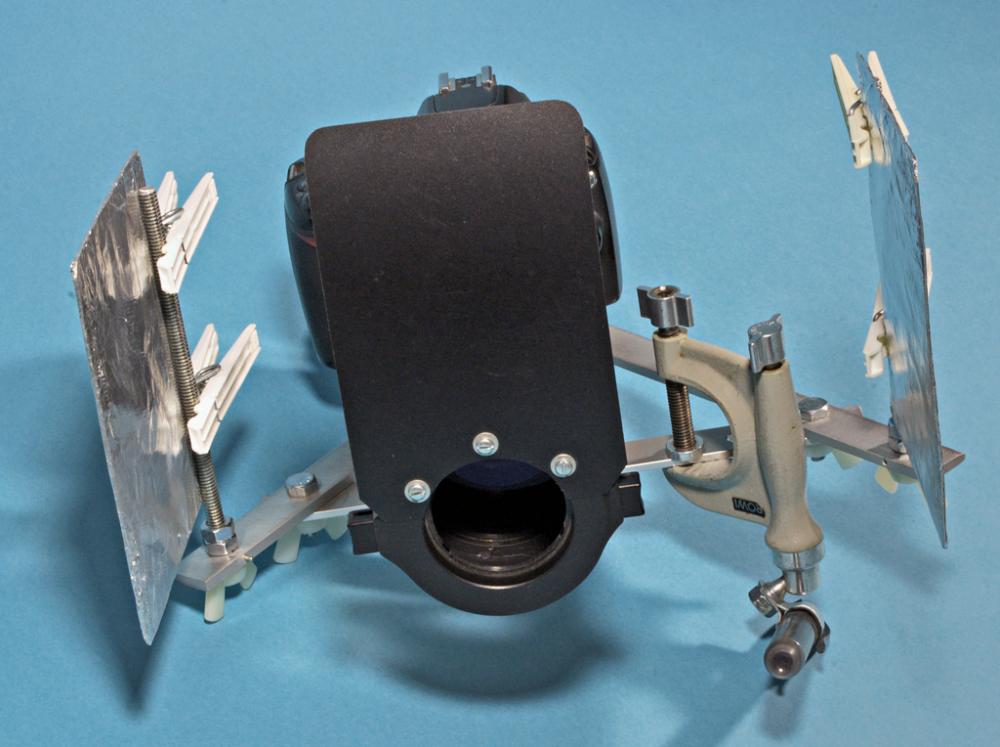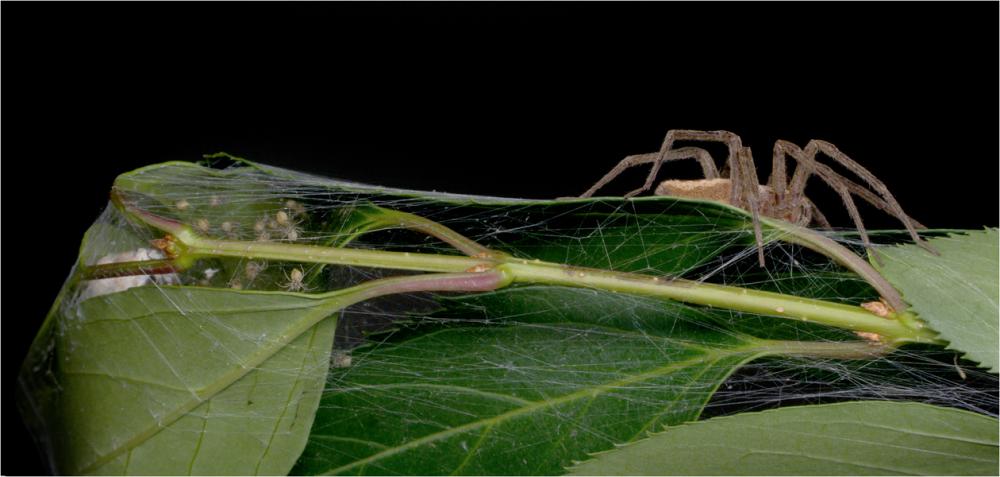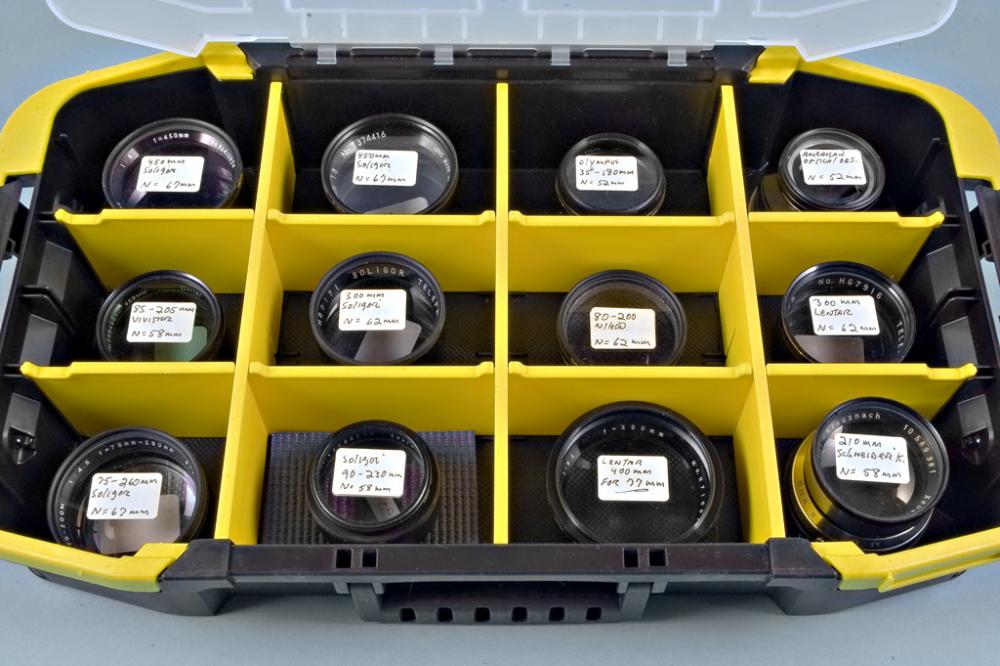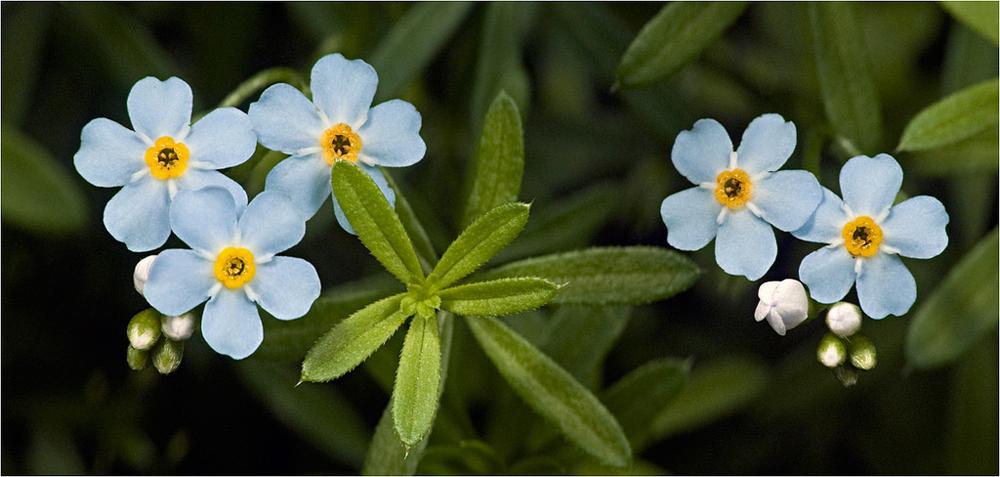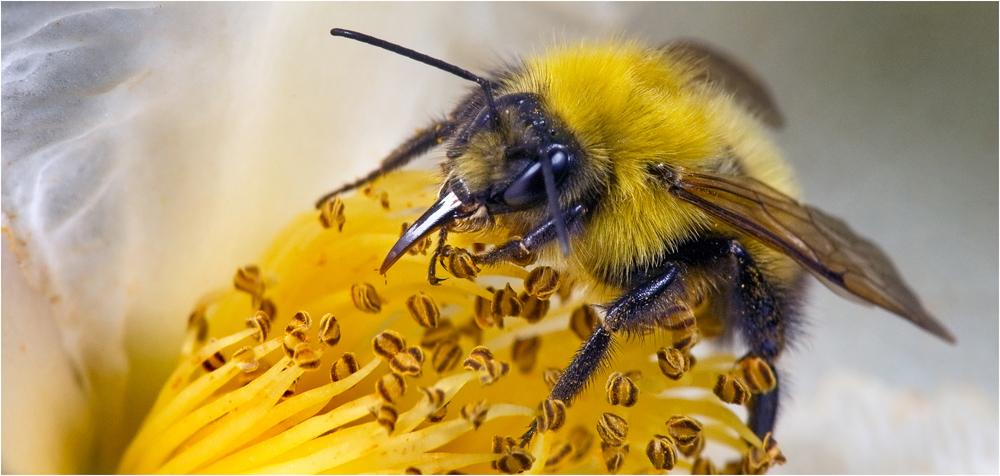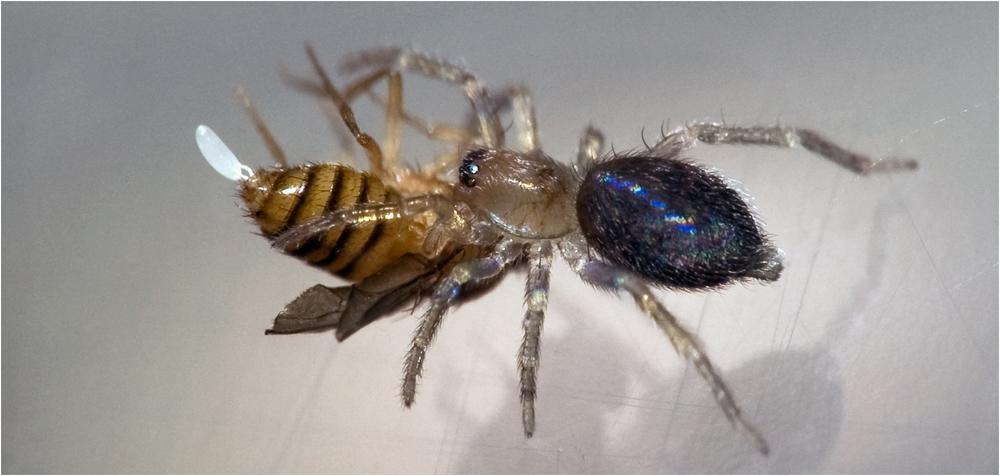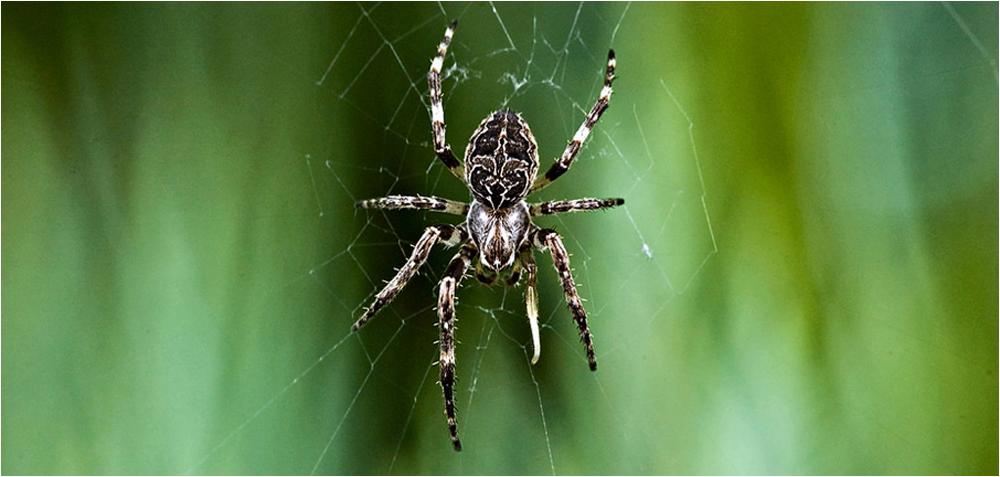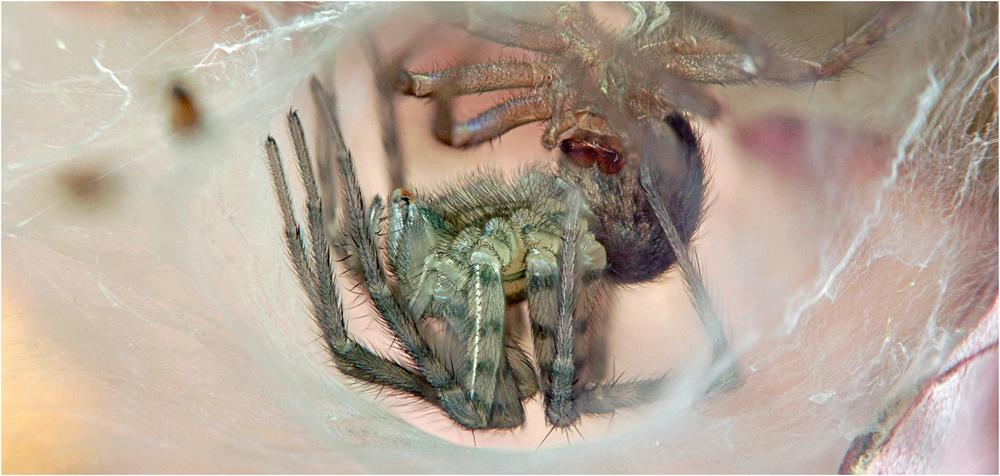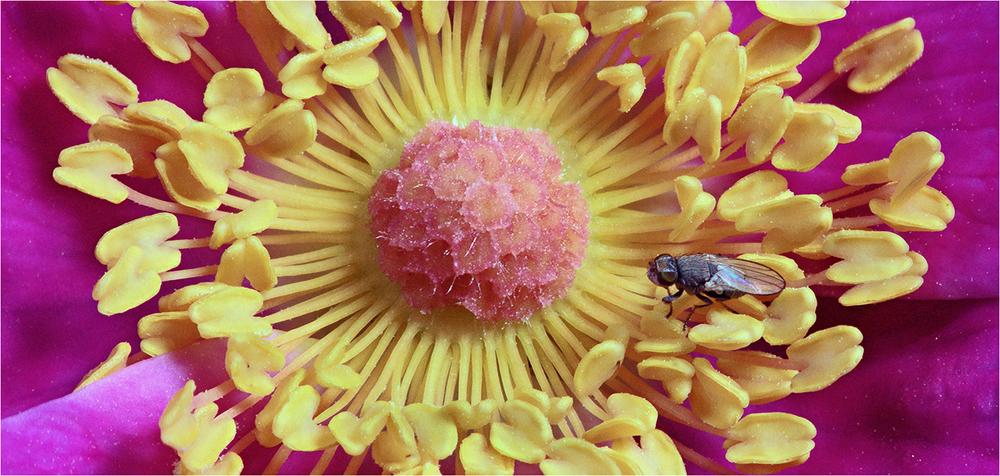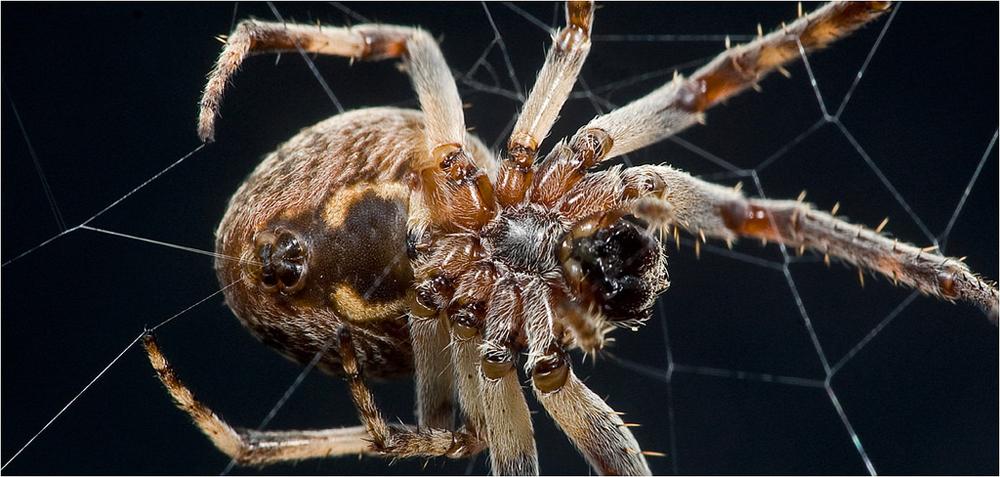
Art V.
Members-
Posts
8 -
Joined
-
Last visited
Content Type
Profiles
Forums
Articles
Everything posted by Art V.
-
Hi... If there's nothing readily available around 165mm (6 1/2 inches), you could probably adapt a large diameter achromatic objective to work for you. I checked a 2013 Edmund Optics catalog but they had nothing larger than 128 mm, and those were very expensive ... $1,200 in the mounted version. Buying a used telescope (refractor) and using the objective might work. Or... contact an optics manufacturer like this one (old link) http://www.dgoptical.com/objective.htm and describe what you need. Prices are hair-raising, so the best might be to find a used consumer-grade telescope that "needs work" (affordable), with an objective as large as you need, the longer the focal length, the better.
-
Regarding curvature: I've found quite a bit of variability in curvature of macro images taken with the iscorama, ranging from none at all, to "extreme"... almost difficult to look at, depending upon which supplemental lens I use, whether it's mounted normally or reversed, and which primary lens the Isco is used with. I've recently scavenged two objectives from badly damaged (totally non-repairable) lenses, a Nikon 80-200mm f/2.8 ED AF, and a Sigma 70-200mm f/2.8 ED AF. These objectives, both 77mm, have ED glass, thus I was eager to see how they worked as supplemental lenses on the Iscorama. Using a Nikkor-H 85mm f/1.8 as the primary, the Sigma was a "dog"... very curved field (sharp in the center), which became much flatter and sharp all over when a Nikon 4T close-up lens was first put on the Iscorama, then the Sigma. This optic was used normally... not reversed. When mounted reversed it's pretty bad... unusable. The Nikon 80-200mm objective was excellent used reversed on the Isco, with a slight bit of curvature across the image. Wnen used flipped the other way with the front toward the subject as when manufactured, the image is absolutely flat, edge to edge... probably the best in my inventory. I've rigged up a special test jig... a rail with a simple camera mount on one end and a sliding articulated "test subject carrier" that allows me to evaluate each add-on lens for field curvature, sharpness, chromatic aberration, etc, when used on the Iscorama, so any curvature (or lack of) that I observe, is "real". Here's an image taken with the same lens combination as the bumblee bee posted near the beginning of this thread... Nikkor-H 85mm, Iscorama compression module, Soligor 90-230mm objective reverse mounted on the Isco, and a Panagor 85-205mm objective reverse mounted on the Soligor. This combination has strong curvature, but the effect is somewhat "masked" by the weird bokeh produced by the iscorama.
-
Hi Gregory... How close do you want to get? I'm using an Iscorama pre-36 for macro anamorphic still photography, using objectives from old telephoto lenses reverse mounted on the Isco compression module, used with a variety of prime lenses. I have no trouble shooting down to a working distance of around an inch, with a field width of about .5 inch. I'm not sure whether this would have any value in video production, though. As an example, the front cell (objective) from an old Soligor 450mm telephoto lens (cheap price generally, gives a field width of 5 inches at a working distance of 12 inches when reverse mounted on the Isco, used with my Nikkor-H 85mm. Art V.
-
Hi Tito... You can bet that if I had a camera that offered stellar high-ISO performance I'd be shooting the bulk of my macro stuff with natural lighting... with maybe a hint of fill. It might actually be worth renting such a camera and "take it for a spin", see how well (or not) great high-ISO capability would work out for anamorphic macro.
-
Hi Tito, Dan... Thanks for your comments. Although I only shoot stills, some of the info I've provided might work with film / video. The decision to go with diopters made from junk lens objectives was purely economic, since... being retired, I don't have much money to put into this activity. The results might be far better for those folks who want to try doing this with more "high end" cameras. I'm using a Nikon D40 and D60, both relatively poor (and limited) high ISO performers, so I'm stuck working at !S0 100 to 400. I've found that good junk lenses to scavenge front objectives from are those primes having a focal length of 100mm, or greater, or zooms having a top end of at least 200mm. Some lenses, certain Vivitars in particular, can be a nightmare to dissassemble. Sometimes a dead film camera having a non-interchangeable zoom lens can serve as the donor for a usable strong diopter. The delicate "surgical procedure" being performed below is to remove the lens from a long section of unwanted barrel. This particular optic is the objective from an old Olympus IS-3 DLX film camera that spent a few minutes in the surf at a local beach. Although the longest focal length is 180mm, it still works well, although the field has quite a bit of curve to it. It's used when I want critical sharpeness in the center and totally blown bokeh at the edge of the field. Reversed on the Isco it gives a field width of 28mm at a working distance of 6.5cm. I should mention that all my working distance measurements are from the subject to the longest part of the barrel left on the objective. In some cases the lens comes off easily, having a short length of barrel that serves as a built in lens shade when reversed on the Isco. Longer lengths of barrel have to be shortened to provide usable working distance... as with the lens above. Also, testing a junk lens objective and having it "bomb" on a particular primary lens is no reason to give up on it. Some objectives I've tried worked terrible with the Iscorama on my Nikkor-H 85mm, were buried in the back of a cabinet, only to be pressed into service later after being tested with the Isco on the 200mm micro nikkor and found to produce brilliant results. Anyone contemplating buying "junk" lenses to rob objectives from should "buy cheap" and not be put off by internal fungus, haze, or cracked elements... providing the objective itself isn't involved. Steer clear of lenses with bent or badly dinged filter rings that might not be able to accept a macro reverse adapter ring. Here's the "bowl" diffuser and "direct flash" shield I use. The UAC-2000 runs about $8.00 at big NYC stores. All the macro shooting I do is hand held... for a reason. Focusing in most cases is "problematic, with most subjects being live creatures going about their business, or inanimate objects being blown around by wind. Working free-hand alows me to constantly shift the camera, following the subject's change in position. I do have a favorite mop handle to steady my hands, or lean on in cases where I might become overbalanced and fall forward. Below is an example of a shot where I leaned on a stick and moved left and right "shopping" for the particular out of focus elements seen behind the spider. A very minor shift in camera position at high magnification can produce a radical change in background appearance. If anyone tries shooting anamorphic macro video, I'd really like to see it. Thanks!
-
Hi Bootsie... Thanks! Here are some quick photos of two of my shooting rigs, with an explanation for each pic. The image above shows my set-up for shooting with a high magnification supplemental lens reverse mounted on the iscorama, using the Isco on my Nikkor-H 85mm f/1.8. The bracket is made from two strips of hardware store aluminum, drilled to allow mounting with a knob onto the tripod mount of the camera. The angle of the arms is adjustable to allow for different sized foil reflectors to be used at various close working distances. This is a special short-arm bracket for working very close to a subject when there's not much room to move around. The Iscorama has the back end (50mm Nikon mount section removed. Attached at that point is a 52mm to 49mm step-down ring. Onto that are mounted three empty 52mm filter rings to allow the Isco to be mounted on any of my primary lenses having a 52mm filter thread. This ensures that the protruding back element of the Isco compression module doesn't come into contact with the primary lens glass. This three ring "spacer" then serves as a convenient place to attacht an old tripod mount (upside-down) from a junk telephoto lens, which is used as an anchor point for a bowl flash diffuser made from the dish found in a particular brand of frozen dinner. The plastic diffuser has a moveable black piece that allows for soft directional lighting. This diffuser mounts atop the lens using the silver knob on the repurposed tripod mount. The ring resting between the two lenses is a 72 to 52mm step-down ring. All my supplemental lenses have been set up with 52mm rings to mount on the Isco, which is fitted with the 72-52mm ring. This simplifies mounting any of my add-on lenses onto the Isco. Plus, the Iscorama's filter ring is plastic, and subject to wear and possible cross-threading when I'm working rushed. The metal step-down ring saves the Isco's threads, and results in faster lens swapping. The larger lens on the left is the front cell from a junk Vivitar 28-210mm zoom lens... set up for reverse mounting with a macro-reverse adapter ring, and is incredibly sharp, but has a curved field. With the Isco mounted on the 85mm, it gives a "field width" of about 29mm at a lens-to-subject of 6.5 cm. The smaller lens on the right is the large "common objective" from an American Optical "Cycloptic" stereo microscope, mounted in a cell I've constructed from six empty 52mm filter rings. This mounts on the Isco with the front of the objective toward the subject... the same way it's mounted on the microscope. It's apochromatic, has a huge clear aperture of about 32mm, and gives a field width of about 40mm with some vignetting, at a lens-to-subject distance of a bit over 10 cm. Using a 2x teleconverter doubles the magnification and halves the working distance on all my supplemental lenses.. Here's the rig assembled with the Vivitar 28-210mm element mounted on the Isco.The two foil reflectors clipped to the threaded rods are adjusted to direct additional flash lighting to the diffuser. Behind the supplemental lens you can see the knurled rubber ring used to "lock" the Isco at infinity. This was scavenged from a junk lens and was the right size to work onto the Isco. It still allows the lens to focus properly, but totally protects against accidentally altering the focus. The 85mm is fitted with a similar band. Here's an oblique side view showing how the reflector support posts are rigged, plus how the diffuser is mounted on the old tripod mount. The reflectors can be mounted inside or outside the posts. The black clip provides more clearance for my right hand to operate the camera than clothes pins would, as used on the left reflector. Here's a bracket I've rigged for night photography. It's particularly useful for shooting when the Isco is mounted on my old 200mm Micro-Nikkor. The cross-bar prevents the arms from shifting position and is a convenient place to mount a small positionable flashlight used for focusing. This "focus assist" light is pre-aimed to provide illumination at the point of focus. The black "flap" is my "direct flash" shield, which mounts like a lens cap onto the front of any of my supplemental lenses. It's positioned to block direct light from the camera pop-up flash, or small speedlight, from striking the subject, creating flat lighting and overexposure. All shooting is done in the fully manual mode, usually at f/16 to f/32 (200mm Micro-Nikkor). Flash lighting is redirected around the end of the lens by the reflectors, which can be adjusted to vary light intensity and shadow angle from either side. The shield is made from a Raynox UAC-2000 universal lens adapter sold with several Raynox close-up lenses, but available for purchase separately. The black flap material is cut from a polypropylene plastic notebook divider. The lens mounted on the Iscorama is the objective from a junk Soligor 450mm lens... extremely sharp, and has a great flat field. It gives a field width of 12.5 cm at a working distance of 31 cm. Here's the night photography set-up all ready to go. This nursery web spider and nestful of hatchlings was taken in complete darkness with the rig shown in the previous photo, but with a bowl diffuser mounted on the lens instead of the light shield. The reflectors were positioned to direct additional light onto the subject. I have several bowl diffusers that can mount on a lens just like the direct flash shield, with the Raynox adapter. This last photo shows a partial inventory of supplemental lenses for using on the Iscorama, most being front cells from junk lenses. Although I have add-on lenses by different manufactures that are from lenses of the same focal length, they produce different "bokeh" and have variability in flatness of field, image color bias, and contrast. If you have any questions, need additional info, or whatever... just ask. Thanks!
-
Hi Julian... Thanks for the response. After a close family friend passed away years ago I arranged for the sale of his old Arriflex II-C camera, His Iscorama lens was given to me by his niece as a "thank you". I've used it for years, shooting slides, then shelved it when I "went digital". Several years ago I stumbled across the EOSHD website and it rekindled my interest in using it for digital work. It's only fairly recently that I've played around with it with the idea of adapting it for close-up shooting. I'm still not fully up to speed with it when working at close distances. The very shallow DOF at high magnifications is a problem, and working with mongrel supplementary lenses scavenged from junk lenses is "iffy" at times. There's a tremendous amount of variability in image quality when I mount add-on lenses on the Isco, depending upon which primary lens I'm using. Through quite a bit of testing I've created separate sets of supplementary lenses to work with the Isco when mounted on specific primary lenses. A few of my add-on lenses do vignette a bit, which is cropped away preserving the normal decompressed aspect ratio. I haven't run any focus / compression tests at anything closer than about three feet, but feel as you do, that if I leave the Isco at infinity there probably won't be a shift in the amount of "squeeze". Here are a few sample images, all taken using an old Nikkor-H 85mm f/1.8... stopped down to f/16 or f/22, with a variety of supplemental lenses. The 85 and the Iscorama both have their focusing ring "locked" at infinity with wide rubber bands, focusing is achieved by moving the camera. Lighting is from either the pop-up flash, or a small speedlight bounced off foil covered cards or shot through a home-made bowl diffuser. Forget-me-nots, 85mm Nikkor-H, Iscorama, objective from a junk Soligor 450mm reverse mounted on the Isco. Orb weaver leg regeneration, Nikkor-H 85mm, Iscorama, Soligor 450mm objective. I really like the bokeh here (out of focus evergreen branches). Web repair, 85mm with Iscorama, Soligor 450mm objective reversed on the Isco, with a Soligor 90-230mm zoom lens objective reversed on the 450mm. Bee, Nikkor-H 85mm, Iscoama, with a Soligor 90-230mm objective reversed on the Isco, and a Panagor 85-205mm objective reversed on the Soligor. Freshly moulted Funnel Weaver, Nikkor-H 85mm, Iscorama, with the objective from a Vivitar 28-210mm zoom lens reversed on the Isco. Tiny fly, Nikkor-H 85mm, Iscorama, and the objective from the Vivitar 28-210 reversed on the Isco. Baby funnel weaver with a fruit fly, Nikkor-H 85mm, Iscorama, and a Raynox MSN-202 close up lens on the Isco. This add-on lens is mounted on an adapter ring that fits the Isco, not in the "snap-on" adapter supplied by Raynox. The results I've been getting with the Iscorama are very encouraging. It's been great for general photography, but seems to work well up close too. Shooting anamorphic macro images is great... but there are a huge amount of "throw-aways"... more than with using a macro lens without the Iscorama. Shooting extreme close-ups with the Isco is probably "pushing the envelope" a bit, but I'm getting enough decent images to keep me at it. I've been asked why I'm "wasting my time" with the old isco, and been advised that shooting wide angle and cropping might be easier. Having done that years ago... there's no comparison. I just like the look and feel of the anamorphic images better.
-
Hi... I just joined the group but have been a lurker and anamorphic shooter since acquiring an Iscorama (1968 version) years ago. The Nikon 50mm module it came with had mechanical issues and has been retired. I now use the compression module on a Nikkor-H 85mm f/1.8, Nikon 105mm f/2.5, and a Nikon 200mm Micro-Nikkor f/4.0. My question relates to a shift in anamorphic "squeeze" when the focusing distance changes. I shoot anamorphic stills only, much of the work is at very close distances. All close-up / macro shooting is done leaving the Isco focused at infinity, with magnification achieved through the use of front mounted diopters and a variety of other optical elements. Focusing is done using the "push-pull" method... by shifting the camera forward and backward. Working distances from the subject to the front of the supplemental lens mounted on the Isco are as short as three centimeters, with an absolute minimum "field width" of around two centimeters. As long as I leave the Iscorama focusing ring set at infinity, will the use of supplementary front-mounted lenses alter the compression? I've conducted a series of tests leaving the Isco set at infinity , and have found that down to a distance of about 3 feet (using diopters when close), sizing the image by making the de-squeezed length 2.1 x the height produces perfectly circular renderings of truly circular objects. Even with extremely high magnification images, the math for decompression: Width = 2.1 x Height, seems to work. Any thoughts? Thanks!! Art V.

